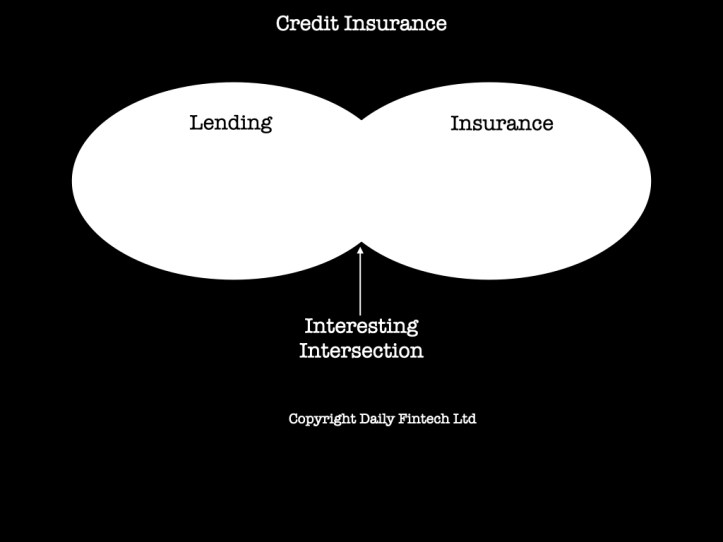The Increasing Importance of Credit Enhancement Insurance

Need to get a leveraged project of the ground? You may well need the help of the worldwide insurance market. Credit enhancement insurance and other techniques are increasingly being used to help oil the wheels of capital allocation and spreading the risk.
Those of you who regularly read my Lending column on Fridays will know that I lament the passing of lending skills in commercial banking. Historically someone who needed an overdraft would go and see the local branch manager who would consider the request. If it was a business Loan the same process would be followed. The Manager was a trained banker who understood the risks and knew the people and the business. All that expertise and experience has disappeared and yet this was the feedstock of personnel needed further up the chain of command as regional managers and future directors. In the seventies and eighties the International banking community trained many thousands of lending and relationship manager roles as account manager for larger companies, governments and banks. This has dissipated as regulators seemed to forget that ROE is a function of leverage and ROA. As a result banks pulled out of commercial lending and the larger players became Investment Banks. Investment Banks do of course underwrite risk but they frequently use the services of external bodies like Rating Agencies to “prove” that the underlying risk is of investment grade. The Investment Banks therefore are something like celebrity chefs cooking up tasty meals which are then verified by the rating agencies acting as latter day food tasters. The difference is that should the food be tainted by E-Coli it will not be the Investment Banks that end up in hospital it will be the poor punter who bought the paper on the recommendation of those rating agencies that failed us all in 2008.
The same players are all still there, doing the same thing and when something unusual happens like Greensill or perhaps Evergrande we find out that they don’t really understand what they are doing and a disaster follows. The same management pack gets shuffled but plenty of bad hands get dealt. This is now a real problem in that following years of zero interest rates and QE we have misallocated resources on an epic scale. It is in this context that credit enhancement comes into its own. I first started using insurance in the mid to late 1980’s when I was arranging mortgage pool funding. As I have frequently noted there is nothing new in the world of finance but I really think that these days where banks have for one reason or another disinter mediated themselves from the commercial lending markets that ameliorating overall risk though innovative techniques has the capacity to really change the market.
The principal difference between banks and other risk managers is that banks tend to take an holistic view of the risk. Once the money has been lent then the borrower has to fulfil its obligations in full. This is of course fine for well established, well managed companies in core businesses . However in 2021 we find ourselves at the tail end of a pandemic, experiencing what looks like human induced climate changed largely through greenhouse gas emissions, and at a time when ground breaking technologies are having a massive impact on the way things are done. These are challenging times for risk takers and analysts, As if that isn’t enough to be getting on with human behaviour is also changing to reflect how they feel about these issues based, amongst other things on ethical considerations.
The purpose of credit enhancement is to help the sponsors remove the more fundamental objections to the unknowns in a credit proposal. The deal has to be basically sound in the first place but will include some risk characteristics which are just not proveable and if wrong could threaten the feasibility of the project. Take for example a start up which involves significant capital expenditures but uses a new technology which while having been tested in trial has never been tested at scale. An insurer may be willing to take the risk of a non scaleable performance deficit. Or someone who wants to build an environmentally friendly hotel that we will only work if occupancy reaches certain determinable projections. Cover may well be available to insure this occupancy rate. A ship finance might need cover for minimum breakeven charter rates. The worldwide insurance market has expanded into a lot of new esoteric areas and there are lots or risk takers out there. The presence of external risk amelioration could mean that a project which would in the past have failed may become saveable. Additionally Insurance is one of the most globally advanced distribution systems capable of reaching all corners of the globe. If it means that more deals get done we all benefit. It is an exciting and very interesting market segment.
Howard Tolman is a well-known banker, technologist and entrepreneur in London,We have a self imposed constraint of 3 news stories per week because we serve busy senior Fintech leaders who just want succinct and important information.For context on Alt Lending please read the Interview with Howard Tolman about the future of Alt Lending and read articles tagged Alt Lending in our archives.
Daily Fintech’s original insight is made available to you for US$143 a year (which equates to $2.75 per week). $2.75 buys you a coffee (maybe), or the cost of a week’s subscription to the global Fintech blog – caffeine for the mind that could be worth $ millions.
